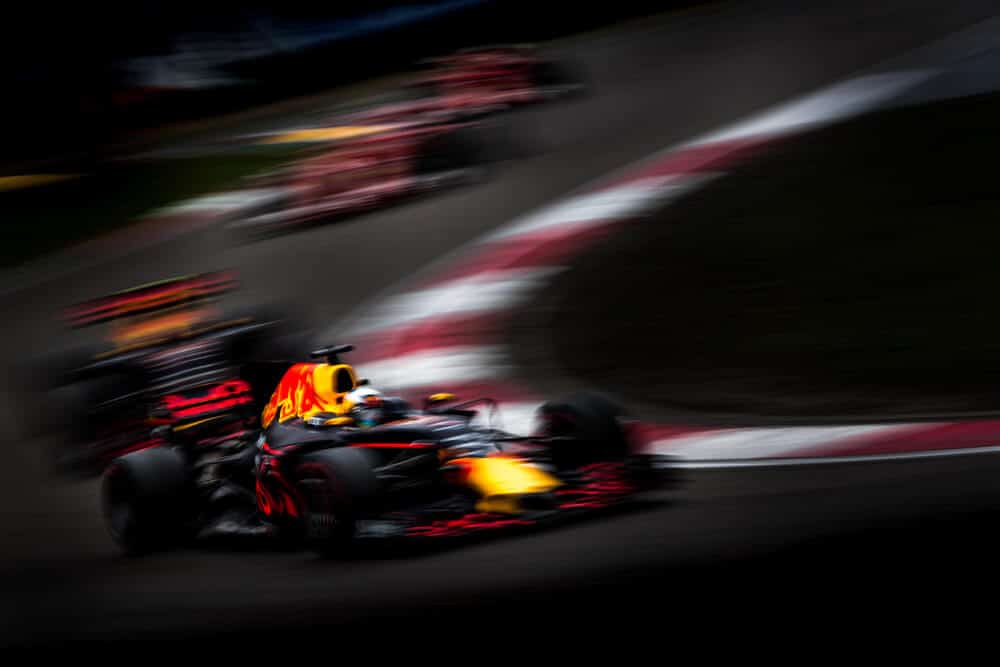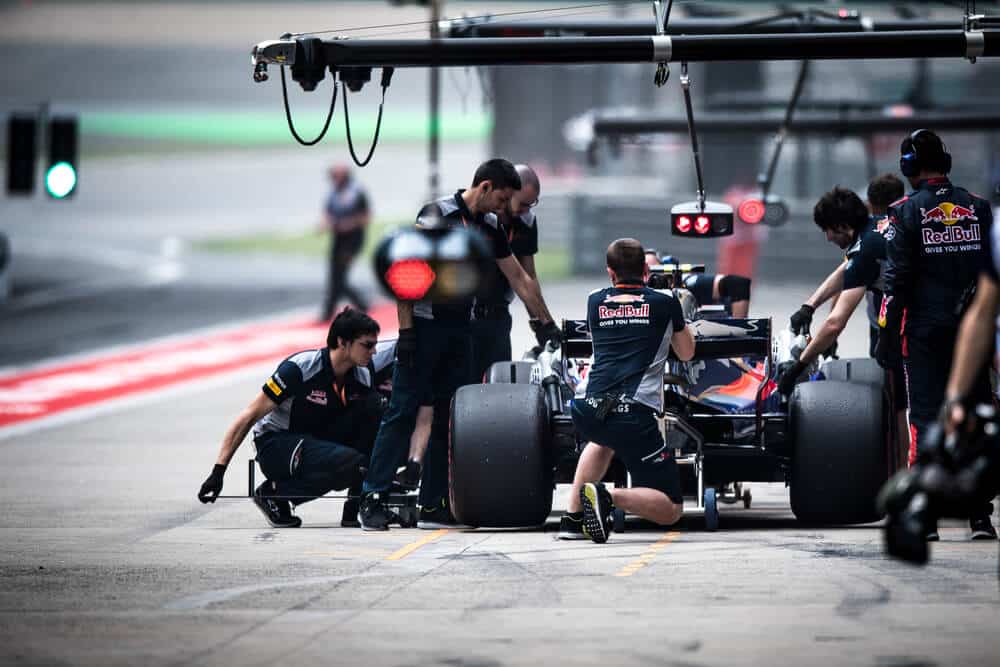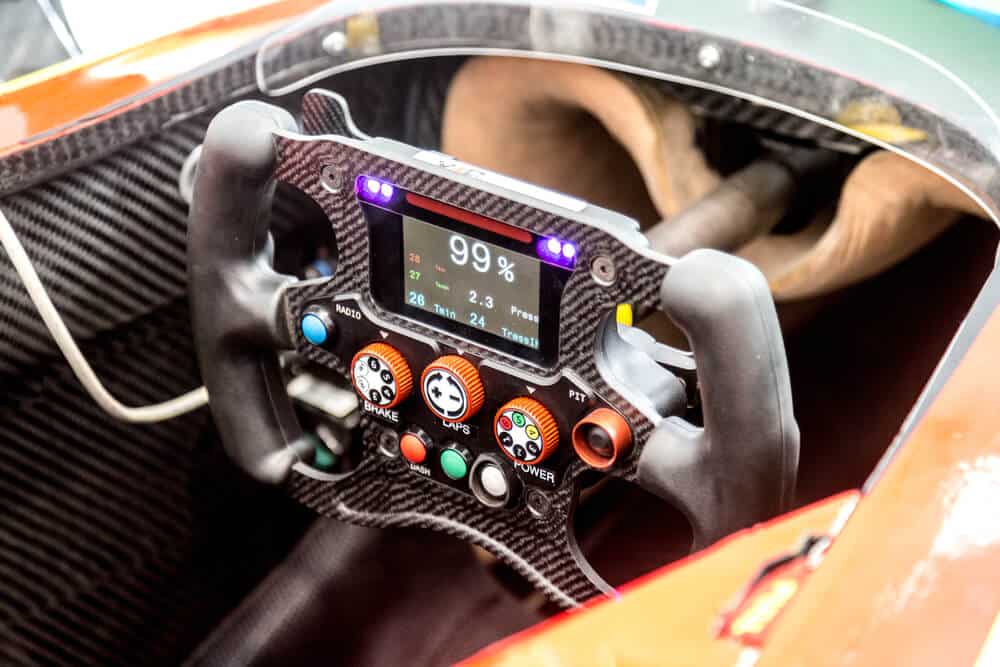Formula 1 cars are the most sophisticated and technologically advanced vehicles on the planet. They race in some of the most challenging conditions. With high-speed cornering, ever-changing track surfaces, and weather conditions that are often unpredictable it’s no wonder that we are curious about the F1 cars.
With all these elements, the question arises: do F1 cars have air conditioning? Since they operate in such extreme conditions, it would make sense for them to be equipped with something to keep the driver cool. So, do F1 cars have Air Conditioning?
In this article, we’ll explore various factors that come into play when examining the possibility of an AC system in a F1 car.
Do F1 cars have Air Conditioning?
No, Formula 1 cars do not have air conditioning due to the weight concerns of the teams. As a result, drivers take extra precautions such as pre-cooling. They also use cooling vests to help regulate their core body temperatures during the race.
While AC may not be present in the cars themselves, teams have taken steps to ensure that the drivers remain comfortable while competing in the extreme conditions of Formula 1.
Moreover, F1 drivers are trained to push their bodies to the limits. They train to cope with the intense heat they experience while racing. By taking on rigorous physical training regimes, drivers can prepare their bodies for any conditions they face in Formula 1.
Key takeaways
Here are some key aspects that you should know regarding the possibility of having AC in F1 cars:
- Formula 1 cars do not have AC due to the weight concerns of the teams.
- While AC may not be present in the cars themselves, teams have taken steps to ensure that the drivers remain comfortable while competing in the extreme conditions of Formula 1.
- Drivers take extra precautions, such as pre-cooling and cooling vests, to help regulate their core body temperatures during the race.
- Drivers also wear special suits designed to help them stay cool during long races.
- Formula 1 cars are designed for maximum aerodynamic performance. It means any additional elements or components can affect their speed and performance.
- F1 cars are designed for performance, not comfort. The real challenge of racing in extreme temperatures lies with the driver.
What are F1 cars?
The real answer to the question of AC in F1 cars lies with the cars themselves. Let’s take a closer look at what Formula 1 cars are and how they are designed to perform. And why AC is not feasible.
Formula 1 cars are single-seat, open-wheel race machines. The cars have been designed and developed to perform at the highest level of motorsport. They are powered by a turbocharged V6 engine and have an aerodynamic design that enables them to reach speeds of up to 360 km/h.
The cars also feature advanced suspensions and brakes. The cars also have high-performance tires that allow them to handle the extreme forces they are subjected to while racing.
In comparison to regular cars, Formula 1 cars have a much different design and purpose. They are designed with the sole intention of achieving maximum speed and performance on the track. It means that many of the features found in regular cars are not present in F1 cars.
For example, air conditioning is not an option for F1 teams because it adds weight to the car. If they were to add that extra weight it could have a negative effect on its performance. Additionally, the cars are designed to be as aerodynamic as possible. Any additional elements or components will affect their speed and performance. This is why teams choose to invest their resources into other areas that are more important for performance.
The importance of weight in F1 cars
We’ve been mentioning weight a lot in this article, but what does it really mean in the context of Formula 1 cars? How does it affect the possibility of an AC system being installed?
Why is weight a critical factor in F1 car design?
Weight is a critical factor in the design of F1 cars as it directly affects their speed and performance. Every additional pound that is added to the car will increase its weight. It can have an effect on its top speed, acceleration, and cornering ability.
FIA has strict regulations on car weight. As of 2023, the minimum weight for a Formula One vehicle is set at 798kg (1,759 lbs). The minimum weight has been increasing steadily over the years. Compared to the average weight of a regular car, which is around 1,302 kg, this is significantly lower.
The weight restrictions in F1 play an important role in creating consistency between cars. Ensuring a balance between technology and driver skill, the rules define minimum and maximum constraints for many aspects. Weight being just one of them.
Additionally, the weight of a Formula 1 car plays an important role in safety. Lighter cars are able to react faster and are more responsive in case of an emergency stop. The lighter the car is, the quicker it will be able to slow down or change direction when necessary ensuring the safety of both the driver and the other drivers on track.
How AC systems add weight to a car
An air conditioning (AC) system in an F1 car would require additional components, such as a compressor, evaporator, and condenser, that would add extra weight to the car. This is extremely undesirable in the sport of Formula 1 because every gram counts when looking to maximize speed and handling.
The cars are made up of lightweight materials, such as carbon fiber and other high-strength composites, to minimize the car’s overall weight.
Furthermore, an AC system would also add complexity to the car’s design and engineering, creating additional challenges and potential failure points. Moreover, such a system also requires extra power from the engine that could further reduce the car’s speed and performance, as even a slight power drop could have a major impact in F1 racing.

Aerodynamics and F1 cars
Another important aspect that F1 teams take into consideration is aerodynamics. Let’s take a look at how aerodynamics influences an F1 car, and how an AC system would affect it.
The importance of aerodynamics in F1 car design
Aerodynamics plays an essential role in maximizing the performance of F1 cars. By carefully designing and engineering a car’s body, teams are able to reduce drag and increase downforce, resulting in faster lap times.
F1 cars are designed to be as aerodynamically efficient as possible, with the body being aerodynamically shaped to reduce drag and increase downforce. This is why F1 teams invest heavily in the research and development of new aerodynamic components, as well as wind tunnel testing, to ensure optimal performance on the track.
Additionally, aerodynamics has a significant influence on the cooling of an F1 vehicle. By utilizing aerodynamic elements such as vents and louvers, teams can help direct the cool air around high-temperature components and transfer the heat away from them. This ensures that temperatures remain at an optimum level during a race, allowing for maximum performance.
AC systems can affect the aerodynamics of an F1 car
F1 cars are complex machines and a single change in the design can have a major impact on performance. Installing an AC system could significantly affect a car’s aerodynamics due to its additional components, weight, and positioning.
The extra weight of the AC system would reduce the car’s top speed, while the placement of its components could disrupt airflow around the car. that would reduce its aerodynamic efficiency. Furthermore, the ducting and vents of the system will be another headache for F1 teams as they create the drag, increasing the car’s overall aerodynamic resistance.
The AC system’s heat output could also influence the car’s cooling system. Making it difficult to maintain optimal engine temperatures – something that is essential for F1 racing. Hence, it is not surprising to learn that F1 cars do not have an AC system.
Heat management in F1 cars
Heat management is an integral part of Formula 1. These cars generate a tremendous amount of heat due to their heavy-duty engines. This intense power output is essential for the car to reach its peak performance during a race and make it across the finish line in first place.
However, with such high operating temperatures comes the risk of components overheating and becoming inoperable. It is, therefore, essential for F1 teams to have a reliable cooling system that can quickly and efficiently dissipate the heat generated by these high-performance engines.
Challenges of managing heat in an F1 car
So, how do Formula One teams keep their vehicles running at peak performance in the face of intense heat? By cooling the car elements. The primary mechanism for doing this is the transfer of that heat into the air. However, achieving a balance between maximizing air intake and maintaining aerodynamic design can be tricky.
The Formula 1 engine works particularly hard to produce its high levels of power. They reach a maximum rpm of 12,000 or even 15,000 without restrictions. To counteract this heat build-up, the car has pipes running through its engine that carry a mixture of glycol and water. That mixture can withstand high temperatures and boil at a higher point than regular water. This allows the liquid to absorb the heat from the engine and transfer it away.
The heated liquid is then pushed to the car’s radiator – which has a larger surface area than a regular vehicle, to allow for faster cooling. The cooled liquid travels back to the engine and the process repeats over and over. Furthermore, air inlets are built into the F1 car to allow for more air intake and cool down the liquid. The hot air is then expelled from the car through exhausts – preventing any damage to its components.
How F1 drivers keep their cool
It’s not just the car that needs to be kept cool during a race – it’s also the drivers. F1 drivers will often undergo intense physical training and conditioning in order to prepare them for the extreme temperatures they will be exposed to during a race.
Additionally, F1 drivers use some clever cooling techniques to keep their bodies at a comfortable temperature. This includes wearing special cooling suits that absorb the heat and cool it down. It also includes taking ice baths before and after races, avoiding direct sunlight, staying hydrated, and occasionally opening their visors to allow some air in.
These methods help F1 drivers stay focused on the track and prevent any potential accidents that could happen due to fatigue or dehydration caused by the intense heat.
Frequently Asked Questions
F1 drivers are trained athletes, so they are able to withstand the intense heat of a Formula 1 race. However, they do employ special cooling techniques to keep their body temperature at a comfortable level.
No, F1 cars have never had air conditioning. This is due to the fact that F1 cars are different from regular cars, as they generate a tremendous amount of heat and require a special cooling system to prevent their components from overheating.
Technically, it is possible to install air conditioning in an F1 car; however, it would not be beneficial as the cooling system will take up weight and space that could otherwise be used for other components. Additionally, FIA regulations require F1 cars to be limited in terms of weight, so any additional components added must be carefully considered.
Conclusion
So, the answer to the question “Do F1 cars have AC?” is no. F1 cars do not have air conditioning, as it would be ineffective in cooling the car due to the extreme heat generated by its high-performance engines. Instead, teams use a combination of sophisticated cooling systems and special techniques employed by drivers to keep themselves cool during races. This ensures that they can stay focused on the track while still being able to withstand the extreme temperatures of a Formula 1 race.



